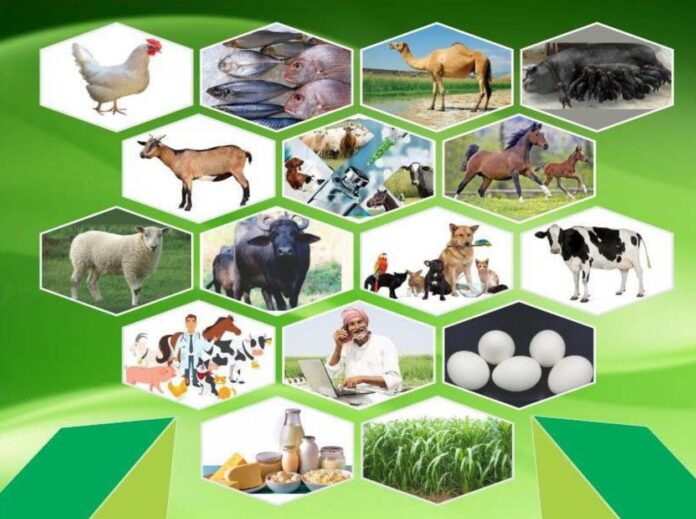SCIENTIFIC CARE & MANAGEMENT OF POST –PARTUM COWS AND NEWBORN CALVES
The success of any dairy farm depends on the proper management of its calves. Better nutrition in the early life of calves is good for their rapid growth and early maturity. Due to improper nutrition of calves, older age in first calves and decrease in productivity throughout life span. Calves constitute the future of a dairy farm. Raising calves is one of the most difficult tasks in the milk production business, which requires management skills, application and consistent attention.
Management of cows and buffaloes immediately after calving
Washing the udder and tits of the animal with antiseptic in lukewarm water and should be dried with a clean towel. If weaning is not practiced, allowed the calf suckling of milk direct from the cows udder and both cow and the calf should be allowed to remain in the calving pen for 10 days. But, if at birth, weaning is practiced, immediately remove the calf needed. Cows which have more maternal instinct and weaning of the calf is a problem, then only by covering the eyes of those cows and keep the calf away from the cow.
Care of newborn calf
Immediately after birth we should assist in removing the phlegm (mucus) from the nose of the newborn calf and dry the calf by wiping it with a clean towel. Correct breathing of the calf should be ensured. Cut the navel of the calf leaving 2-3 cm from the body with clean scissors and apply an antiseptic like tincture of iodine to prevent the entry of infection through the navel.
Deworming
Ascariasis roundworm is common in newborn calves, for this a single dose of 10 g of piperazine adipate should be given to the calves.
Colostrum feeding
Colostrum is the mother’s first milk. It contains large amounts of gamma globulins which are antibodies produced against antigens by the cow during its life. Absorption of these antibodies provides passive immunity against many diseases to the calf in early life. In addition, colostrum is a very important source of nutrients with seven times the protein and twice the solids content of normal milk. Thus it promotes early protein and solid intake. It has normal to higher amounts of vitamins and minerals. When a calf is born, it does not contain any antibodies and vitamin A, which are necessary to combat the disease. The first dung (meconium) of the calf is sticky and black in color and this dung from the newborn calf should be removed within 4 to 6 hours after feeding the colostrum. Colostrum helps to expel meconium due to its laxative properties.
Time of colostrum feeding
The first dose of colostrum in the first 15-30 minutes of life and the second dose approximately 10-12 hours later can be very useful.
Amount of colostrum fed to calf
Colostrum should be given to a calf during the first 3-5 days. The amount of colostrum fed to calves is depending on their body weight. In Indian conditions it is recommended to feed colostrum during first 5 days at 1/10th of the calf’s body weight. Before feeding, milk should be boiling and cooled down at body temperature (390 C). For potfeeding calf’s training should be following way: • Weaned calves trained to drink milk in pots so that the management of feeding is easy. • In general, crossbred calves quickly learn to drink milk from the pot or nipple. But it is very difficult to train buffalo calves. • Buffalo cows learn to drink milk at a lazy and slow pace. • The prescribed quantity of boiled and cold milk should be put in the milk vessel or nipple and taken to the calf. • The attendant should dip his two fingers (index and middle fingers) close to the mouth of the calf after cleaning. • The calf will start sucking the fingers after tasting the milk. • Slowly bring the fingers to the vessel and dip it in the milk. When calf takes one or two mouths of milk, the fingers should be removed • This process can be repeated till the calf stop drinking milk and raise his head. Training for buffalo calves requires patience and efforts.
Colostrum’s substitute:
in case of non-availability of colostrum due to accidental death of mother or agalactia, colostrum substitute can be used. • It can be prepared by mixing 2 whole eggs in one litre of milk and 30 ml of castor oil. It should be fed three times in a day.
Milk Replacer
It basically consists of skim milk powder and lard or vegetable fat. Glucose, soybean flour and a small portion of buckwheat flour may also be combined with certain minerals and vitamins. Milk replacer can be started from the second week of birth.
Calf starter
This dry grain mixture is fed to the calves initially. The calves start eating a small amount of dry starter from the second week of life. A calf starter should be high in energy (75% TDN) and protein (14-16 DCP). Calf starter can be fed on a free-choice basis until the calf starts consuming 1-1.5 kg of starter mix per day, after which the quantity can be restricted. Generally it takes 2 to 3 months for the calves to reach this stage. Feeding of the calf can be stopped at the earliest when the calf starts eating 0.4-0.5 kg of dry grain mix per day (depending on the breed).
Feeding of calf from 3 months to 6 months
Once the calf reaches 2-3 months of age, the riskiest period of calf mortality and the most expensive feeding has passed. Now in this period medium quality fodder and simple grain mixtures can be fed to livestock. Normally one calf should be fed one kg of grain mixture per 100 kg body weight per day.
Weaning
The rearing of the calf by separating it from its mother is called weaning. Under this arrangement, the cow is not allowed to milk its calf from birth. Instead, the calf is fed whole milk or skim milk in the required quantity after extracting the whole milk from the cow.
Benefit
- Calves can be fed milk in a prescribed quantity. • The exact amount of milk produced by the cow in a particular lactation can be recorded. • Clean milk can be produced. • Prevents diarrhea in calves due to excessive feeding of cow’s milk • Cows continue to give milk even after the death of the calf.
SCIENTIFIC CARE & MANAGEMENT OF POST –PARTUM COWS AND NEWBORN CALVES CAN BE DOWNLOADED IN PDF FROM HERE:
Care of New Born Calf and Post-Partum Cows
DR. VIJAYA JADHAV, NVC




